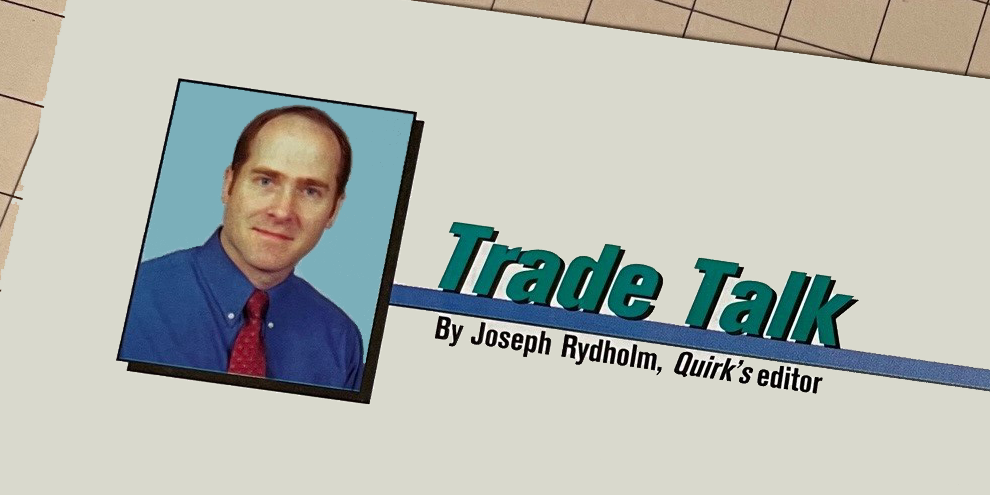In What to Say When: Advertising Appeals in Evolving Markets, authors Rajesh Chandy, Gerard Tellis, Deborah MacInnis, and Pattana Thaivanich argue that in young markets - those where a product or product category is new - advertising that educates consumers rather than appealing to their emotions is likely to be most effective. Since consumers don't know much about the product and what differentiates it from others on the market, they are more likely to seek out and soak up the information contained in what the authors call "argument-focused" ads.
In such markets, the authors write, "...if ads are to be persuasive, they need to provide compelling arguments that reduce purchase risks and differentiate the product from competitors. Since consumers are motivated to process ads when prior knowledge is lacking, they should find ads more compelling when the ads provide a credible reason for buying the product."
By contrast, older markets - where the product or category is well-known - may demand use of a more emotion-based approach. "(W)hen consumers are already aware of the product, and have pre-existing attitudes toward it, they are less motivated to process information about it. Indeed, they may negatively respond to argument-focused ads because of satiation, boredom, or irritation..."
Thus an ad using some kind of emotional appeal may better capture attention, helping consumers retrieve positive product knowledge from memory and spurring them into action.
Similarly, running a campaign based on emotional appeals and following up with informational ads may short-circuit the process by which a consumer forms beliefs toward and feelings about the product. "While emotions may convey warm feelings and stimulate favorable brand attitudes, attitudes formed by such processes may not lead to choices of products about which consumers are not well informed. The reason may be that such ads may neither provide a credible reason for buying the product nor change fundamental beliefs about it. Furthermore, when consumers lack product knowledge, emotional ads may distract consumers from critical product content (Moore and Hutchinson 1983). Thus, consumers are less likely to encode or transfer product information to long-term memory."
Study of ads
As a basis for their paper, the authors conducted a study of responses to 30-second TV ads for a medical referral service. In the ads, consumers are urged to call a toll-free number to talk with a service advisor, who connects them to a third-party provider that matches their needs and preferences. The service is free to consumers. The referring company receives a fee from the providers for a guaranteed minimum number of referrals each month.
The study used data about ads that were shown in 23 of the 62 markets in which the company advertises (the ads had been showing in the markets in a range from eight to 144 months). Two paid coders analyzed the 72 TV ads, coding for content and the executional cues of each ad. During the period covered in the research, the firm did not systematically vary the executional cues used in the old versus new markets.
The authors began with a number of hypotheses:
- Argument-based ads are more effective in younger markets than in older markets.
- Emotion-based ads are more effective in older markets than in younger markets.
- Ads in which key attributes (in this case, a toll-free number to call) are prominent are more effective in younger markets than in older markets.
- Negatively-framed ads (those showing how a product or service can avoid or solve a problem) are more effective in younger markets than in older markets.
- Positively-framed ads (for example, an ad for a cleaning product that focuses in its fresh scent) are more effective in older markets than younger markets (in the cleaning product example, an ad touting the new scent would give consumers who are aware of and convinced about the product's cleaning abilities a new reason to consider trial).
- Expert endorsers are more effective in younger markets than in older ones.
- The relationship between market age and ad effectiveness follows an inverted U shape.
The findings supported all of the hypotheses, in varying degrees. The number of referrals provided in response to the argument-based ads in the younger markets declined as the market aged, and the response to ads using emotional appeals increased as the market aged. Also, ads in which the toll-free number was visible longer were more effective in the younger markets.
More work is needed
The researchers acknowledge some limitations - for example, they studied a market in which competitive pressures were limited - and certainly more work is needed (e.g., how do you define what makes a market old or young?), but the study raises some interesting points and provides evidence that it's wise to number "age of market" among the factors that influence how an ad campaign is developed, rolled out, and ultimately judged.
What to Say When: Advertising Appeals in Evolving Markets (No. 01-103; $18) is available from Marketing Science Institute (www.msi.org).
